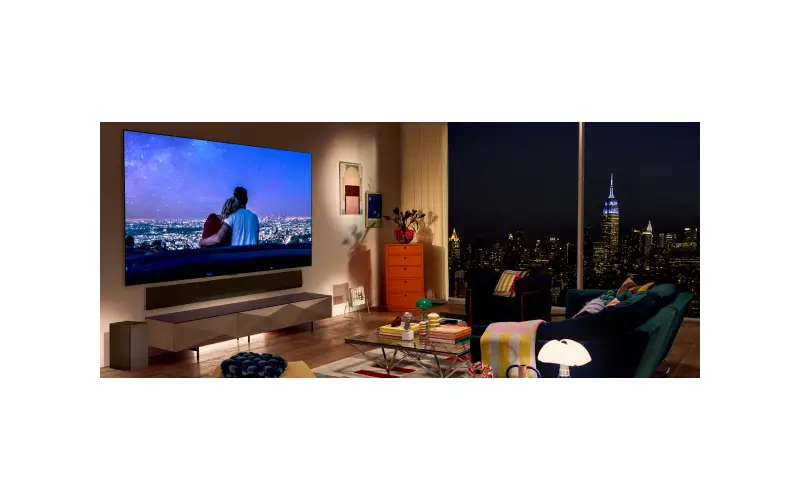By CE Critic - Buy Better Tech
First reported by Jeff Baumgartner at LightReading, LG Electronics recently sent shockwaves through the tech industry when it announced its decision to discontinue support for the ATSC 3.0 standard in its TVs for 2024 due to a "challenging and uncertain patent landscape." This move has raised questions about the future of ATSC 3.0 and whether other manufacturers will follow suit. In this article, we'll delve into the implications of LG's decision, the background of ATSC technology, and the potential impact on the industry.
The ATSC Format and Its Evolution
The Advanced Television Systems Committee (ATSC) format has been instrumental in shaping television broadcasting in the United States. The ATSC 1.0 standard, established in the late 1990s, marked the transition from analog to digital TV broadcasting. This shift brought improved picture and sound quality, as well as additional channels through the use of digital compression technology.
Fast forward to ATSC 3.0, often referred to as Nextgen TV. This is the next generation of broadcast format designed to revolutionize television. ATSC 3.0 promises not only 4K TV but also advanced video and audio formats like High Dynamic Range (HDR) and Dolby Atmos. Moreover, it introduces interactive apps, offering a more engaging and immersive TV experience.
The Challenge of ATSC 3.0 Adoption
Despite its potential, the adoption of ATSC 3.0 has been slower than anticipated. Several factors have contributed to this gradual rollout:
-
Patent Issues: LG's recent decision to pull support for ATSC 3.0 highlights one of the significant challenges—patent disputes. LG faced a patent battle with a company holding ATSC 3.0 patents but not participating in ATSC-related patent pools. This legal confrontation resulted in unfavorable royalty rates for LG.
-
Industry Support: Some popular budget TV brands like Vizio and TCL have opted not to support ATSC 3.0, limiting consumer choices. While Sony, Hisense, and Samsung offer ATSC 3.0-compatible TVs, the lack of widespread support has hindered its adoption.
-
Broadcast Coverage: Broadcasts using ATSC 3.0 technology do not yet cover the entire country. This limited availability makes it challenging for consumers to experience the benefits of Nextgen TV.
LG's Patent Battle and Its Impact
LG's decision to withdraw support for ATSC 3.0 in its 2024 TV lineup stems from its patent fight loss against a company holding multiple ATSC 3.0 patents. LG expressed concerns about entities owning ATSC-related patents but not committing to reasonable and non-discriminatory (RAND) terms for licensing. This "challenging and uncertain patent landscape" led LG to suspend ATSC 3.0 compatibility.
LG has been a strong advocate of ATSC 3.0 and a leading developer of TVs incorporating Nextgen TV technologies. This decision was undoubtedly a difficult one for the company, highlighting the severity of the patent challenges faced.
What's Next for ATSC 3.0?
While LG's withdrawal is a setback for ATSC 3.0, the technology is not dead in the water. Consumers can still purchase pre-2024 LG TV models equipped with ATSC 3.0 tuners. Additionally, other manufacturers like Samsung, Sony, and Hisense continue to offer ATSC 3.0-compatible TVs.
However, LG's decision raises concerns as broadcasters continue to deploy ATSC 3.0-based systems. The industry relies on the FCC to address these challenges and facilitate the transition.
Furthermore, the landscape is evolving with the emergence of technologies like 5G Broadcast, which applies 5G standards to over-the-air TV signals. These initiatives, while complementary in some aspects, may also pose competition to ATSC 3.0's goals.
Conclusion: A Critical Juncture for ATSC 3.0
LG's withdrawal from ATSC 3.0 support due to patent issues marks a critical juncture for the future of Nextgen TV. It highlights the pressing need for resolving patent disputes, ensuring widespread industry support, and expanding broadcast coverage.
The fate of ATSC 3.0 now hangs in the balance. Whether other manufacturers will follow LG's lead or if industry stakeholders can address these challenges remains to be seen. As consumers increasingly demand advanced TV technologies, the industry must find solutions to ensure the successful adoption of ATSC 3.0 and the realization of its promises.
The tech world watches closely, as the path ahead for ATSC 3.0 remains uncertain, but the potential for transformative television experiences continues to tantalize both manufacturers and consumers alike.





